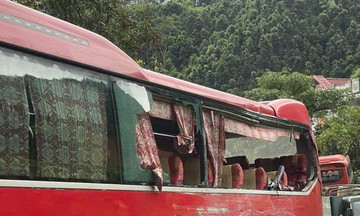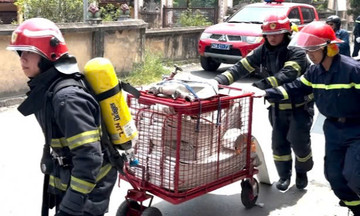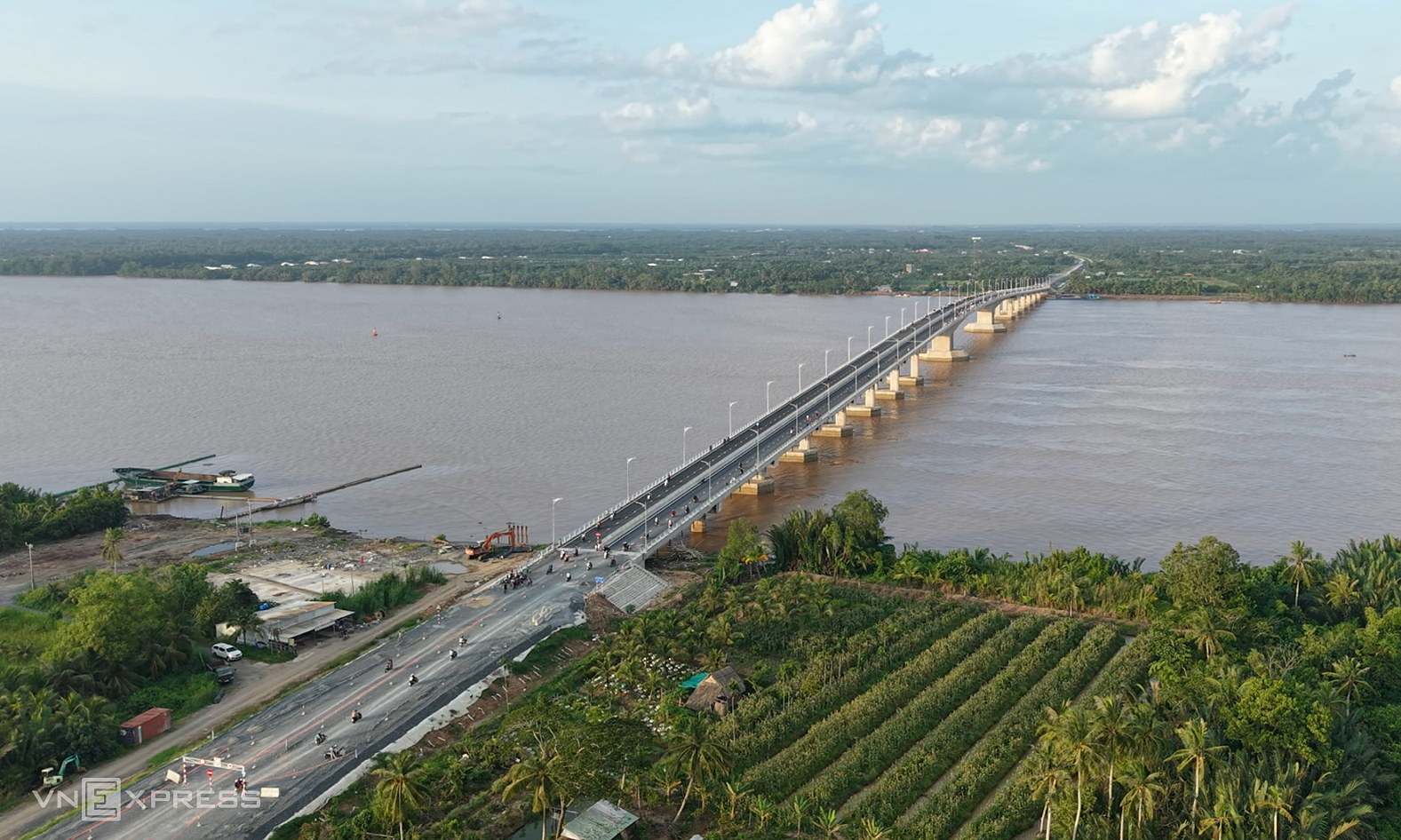 |
The 862-meter Dai Ngai 2 bridge has 13 spans and 91 girders, each weighing over 80 tons and measuring approximately 38 meters long. The main span is 330 meters long. This balanced cantilever bridge has a 150-meter navigation clearance, making it one of the largest in Vietnam. (Author or source) |
After almost two years of construction, the main section of the Dai Ngai 2 bridge, connecting Cu Lao Dung island in the Hau river's lower reaches with Can Tho city at Dai Ngai commune, is finished. The 500-meter access roads at both ends of the bridge are undergoing load testing and settlement monitoring, with completion expected by the end of the year.
The bridge is part of the Dai Ngai bridge project, spanning over 15 km across the Hau river, with a total investment of nearly 8,000 billion VND. Another branch of the project, the Dai Ngai 1 bridge, is located 5 km away. The entire project will shorten the distance from Can Tho and Ca Mau to Ho Chi Minh City by 80 km, reducing traffic on National Highway 1.
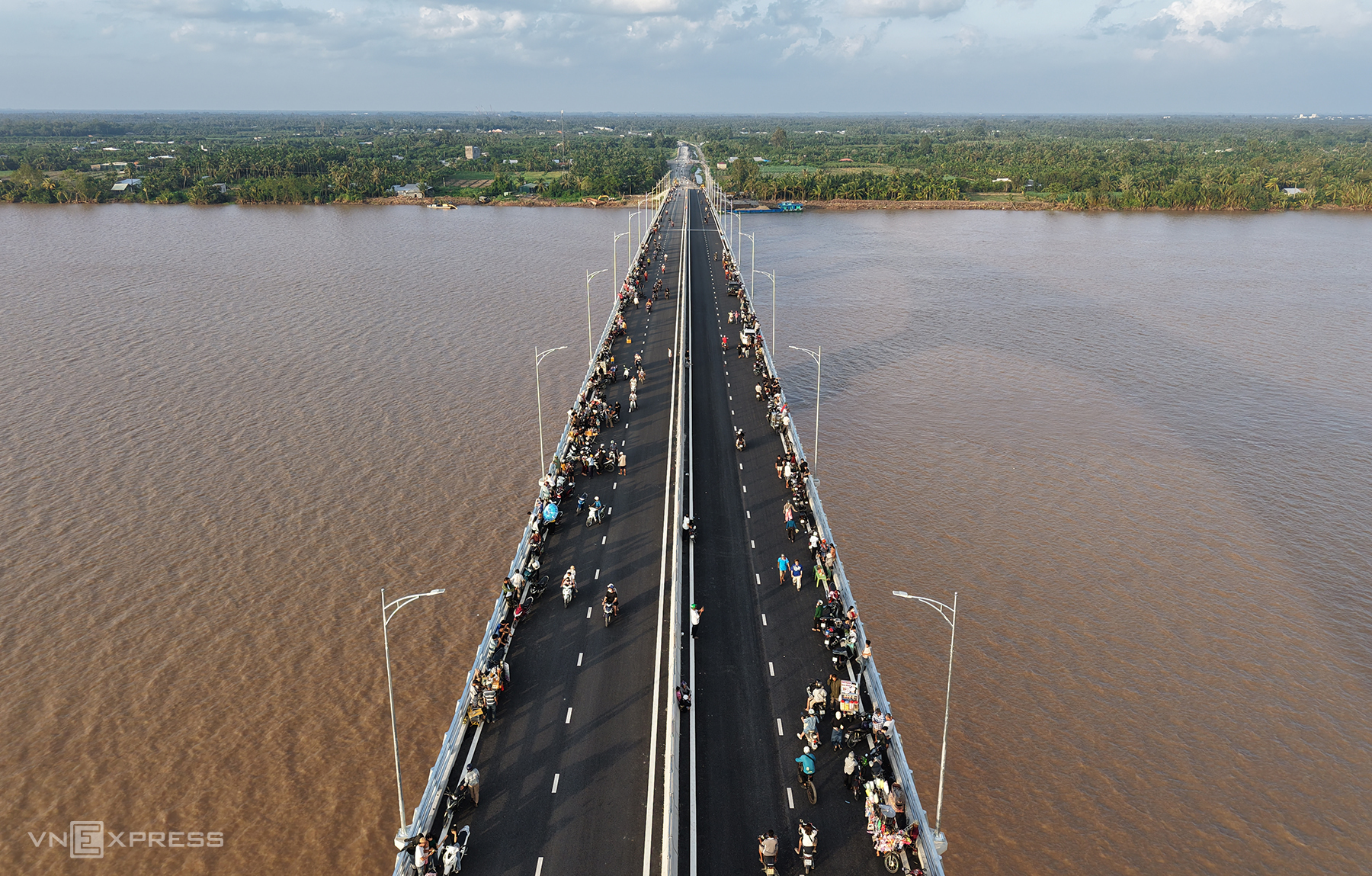 |
In early August, many people visited the bridge in the afternoons. Upon completion, the project will reduce travel time for locals to just over five minutes by car, compared to the 20-minute ferry ride. (Author or source) |
The 862-meter Dai Ngai 2 bridge has 13 spans and 91 girders, each weighing over 80 tons and measuring approximately 38 meters long. The main span is 330 meters long. This balanced cantilever bridge has a 150-meter navigation clearance, making it one of the largest in Vietnam. (Author or source)
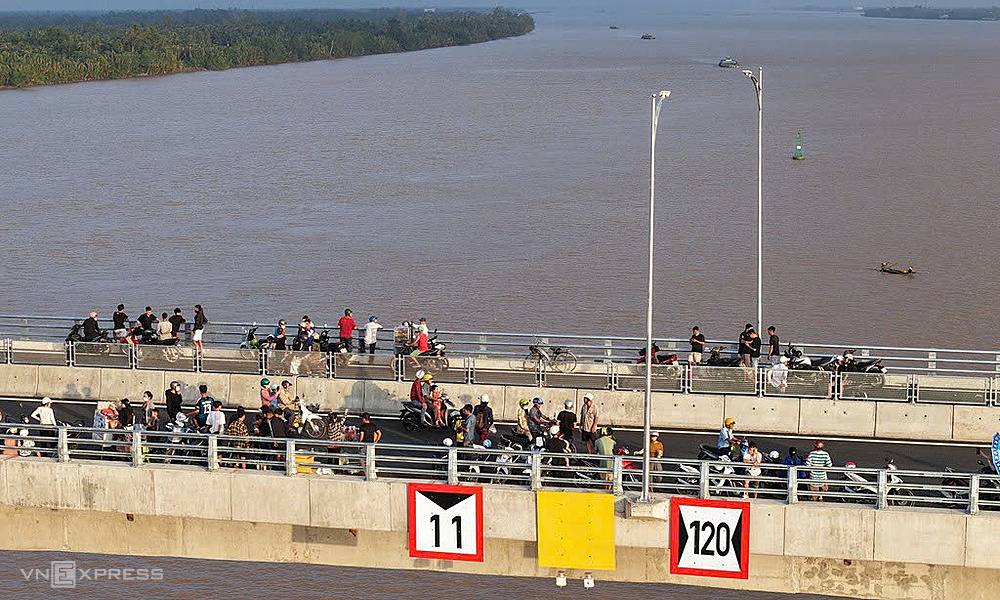 |
Le Van Dung, 57, from Long Phu commune, Can Tho city, said the bridge is a long-held dream for local residents. Its completion will facilitate travel, education, and goods transportation. (Author or source) |
In early August, many people visited the bridge in the afternoons. Upon completion, the project will reduce travel time for locals to just over five minutes by car, compared to the 20-minute ferry ride. (Author or source)
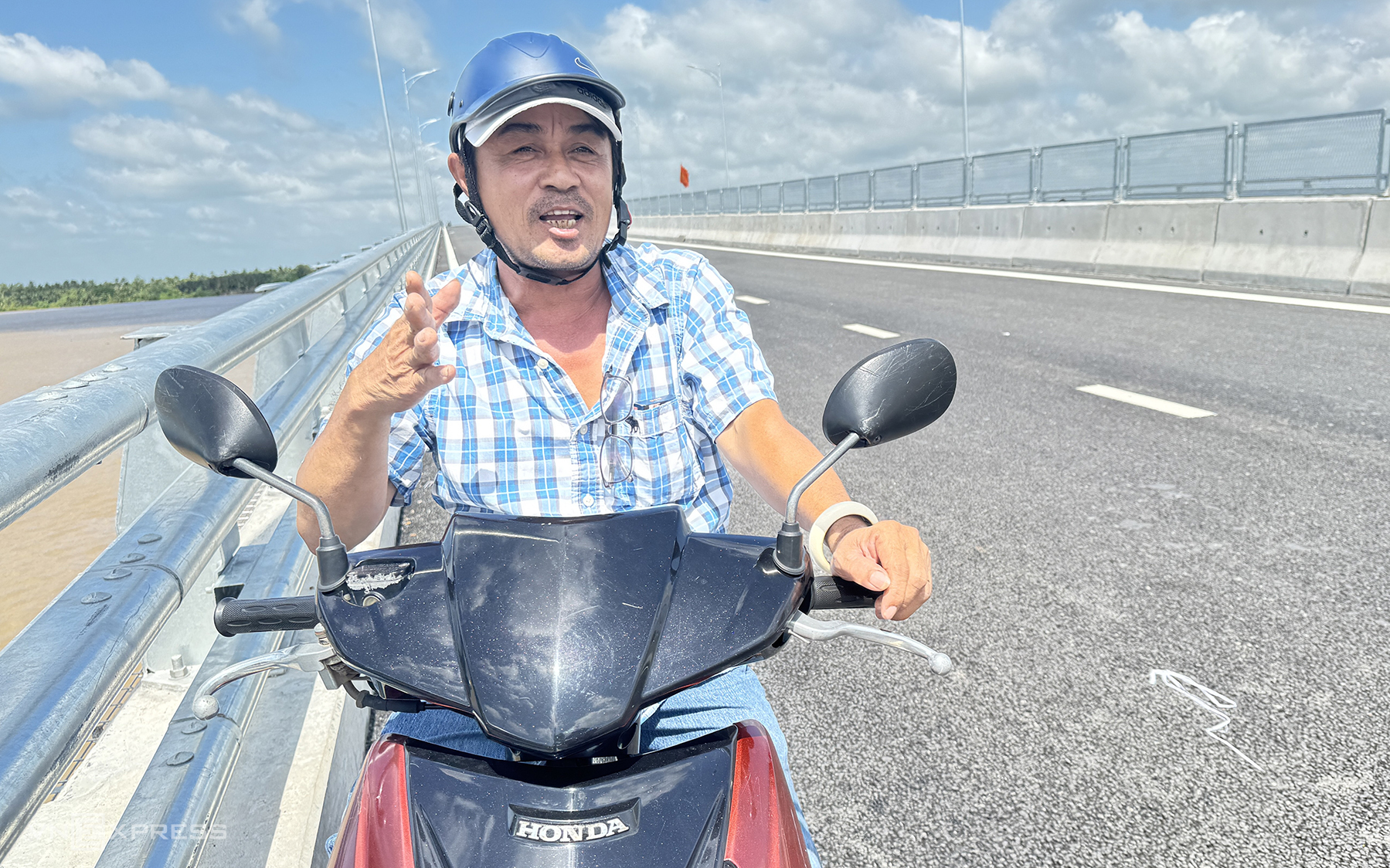 |
Since early August, the investor and construction unit have opened the bridge to pedestrians, motorcycles, cars with 16 seats or fewer, and trucks under 3.5 tons. This allows residents to transport goods and agricultural products more quickly and safely. (Author or source) |
Le Van Dung, 57, from Long Phu commune, Can Tho city, said the bridge is a long-held dream for local residents. Its completion will facilitate travel, education, and goods transportation. (Author or source)
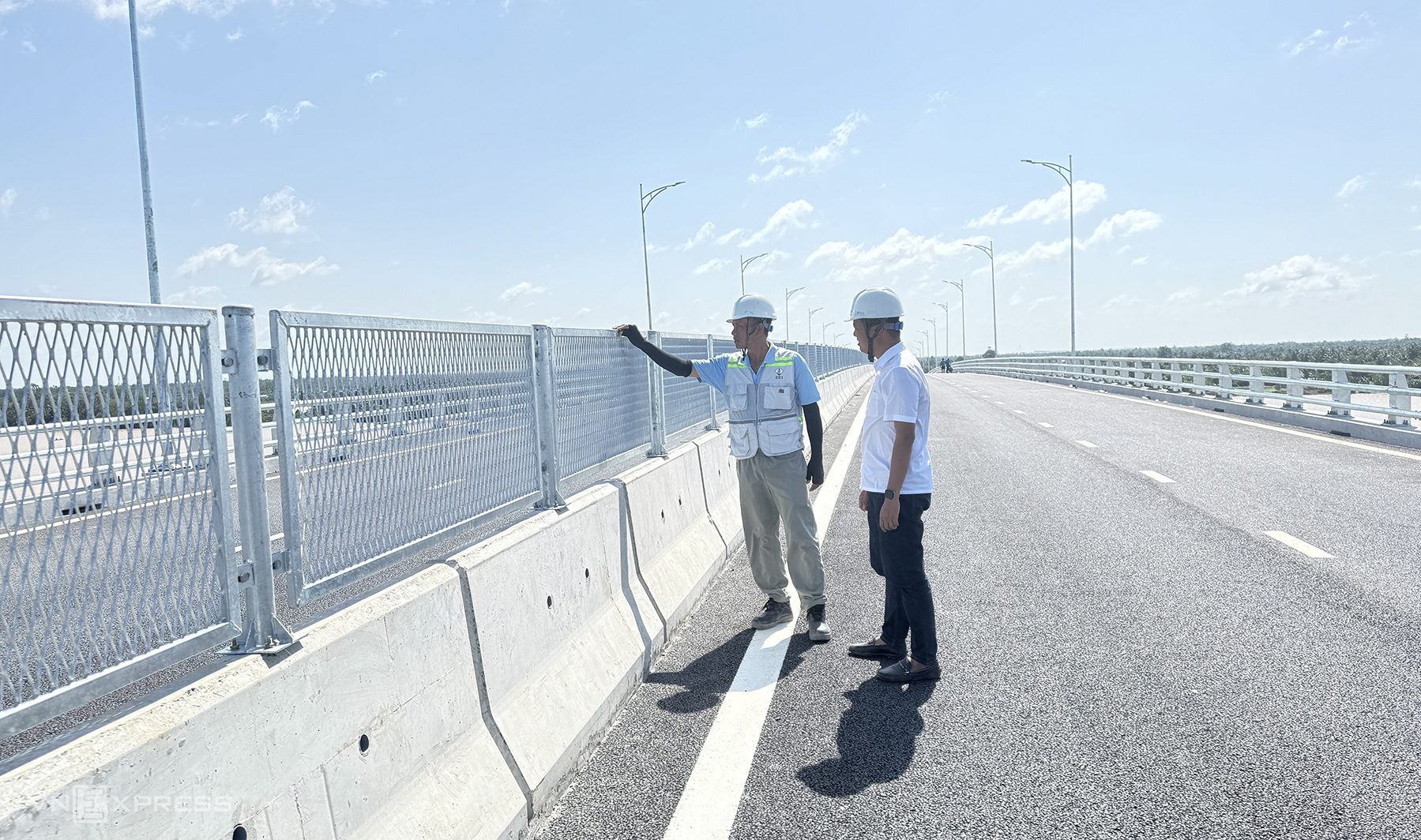 |
Nearby, a 5-km access road in Cu Lao Dung district, connecting Dai Ngai 2 bridge with the under-construction Dai Ngai 1 bridge, is also underway. (Author or source) |
Engineer Nguyen Anh Duc and Tran Thanh Hoang from Project Management Board 85 (the investor) inspect the 1.6-meter high median barrier on the bridge.
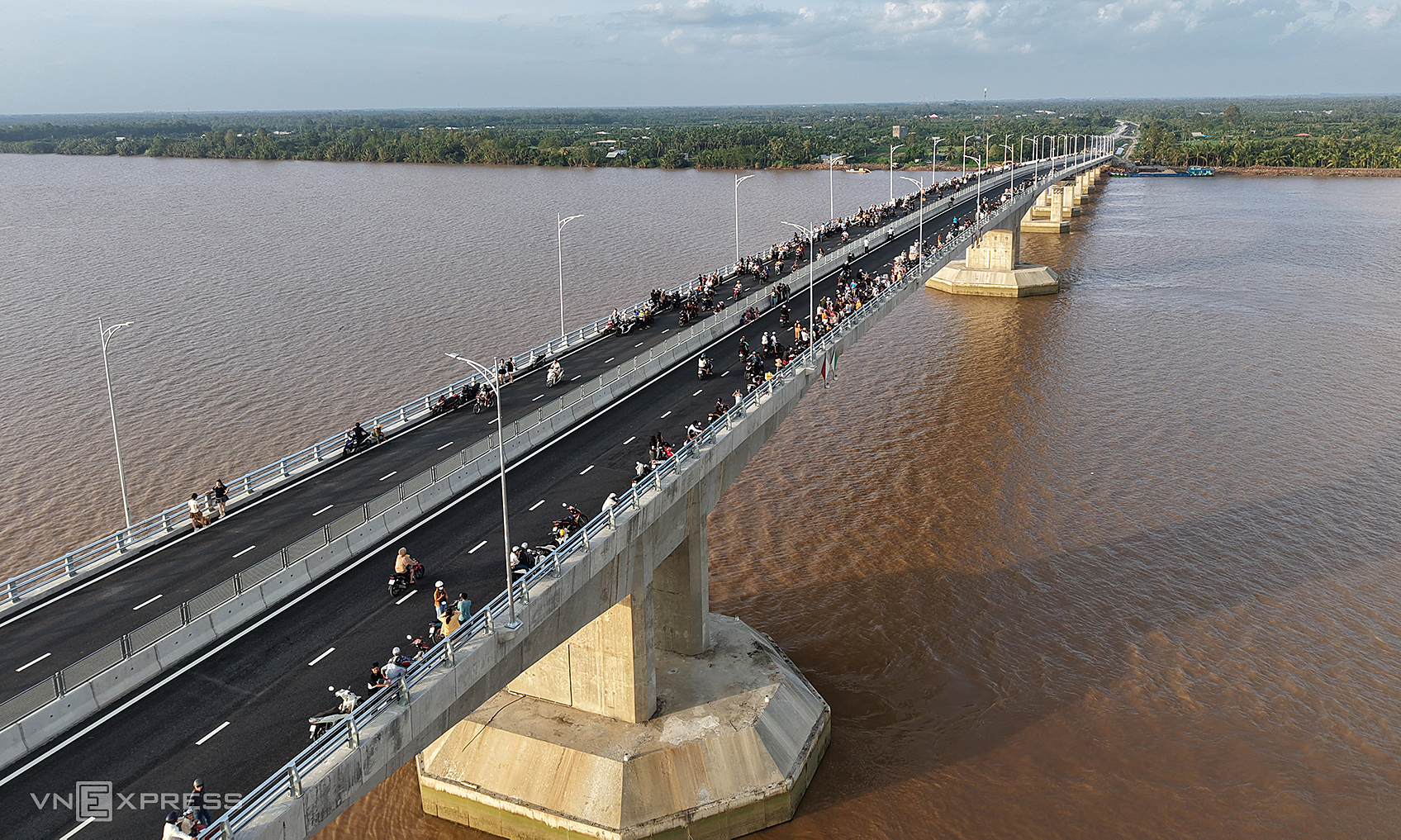 |
Since early August, the investor and construction unit have opened the bridge to pedestrians, motorcycles, cars with 16 seats or fewer, and trucks under 3.5 tons. This allows residents to transport goods and agricultural products more quickly and safely. (Author or source)
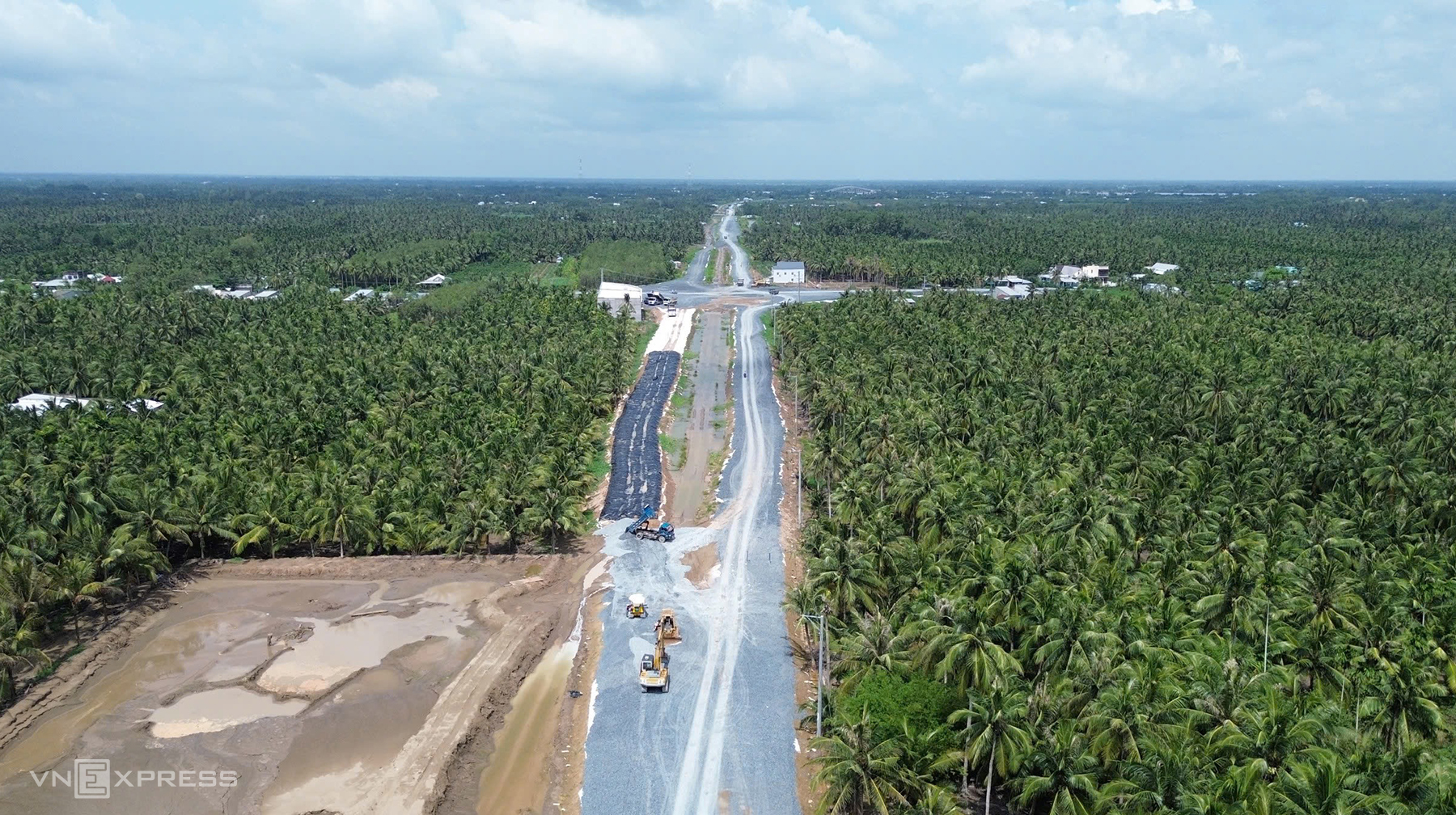 |
Nearby, a 5-km access road in Cu Lao Dung district, connecting Dai Ngai 2 bridge with the under-construction Dai Ngai 1 bridge, is also underway. (Author or source)
 |
A rendering of Dai Ngai 1, one of the two bridge projects across the Hau river.
Construction on Dai Ngai 1 began in late 2024 and is expected to be completed in 2028. The 3.3 km structure features a 2.59 km cable-stayed main span with an A-shaped tower rising 110 meters (from the bridge deck) and a width of 21.5 meters. It will cross the Dinh An channel of the Hau river. This will be the second largest cable-stayed bridge in the country, after the Can Tho bridge, and comparable to the Vam Cong bridge.
 |
Route map of the two Dai Ngai bridge projects. Graphics: Dang Hieu.
The entire project spans over 15 km. The starting point intersects National Highway 54 in Tieu Can commune, Vinh Long province (formerly Hung Hoa commune, Tieu Can district, Tra Vinh province), and the endpoint intersects National Highway 60 in Dai Ngai commune, Can Tho city (formerly Long Duc commune, Long Phu district, Soc Trang province).
Dai Ngai is the fourth bridge across the Hau river, following the Can Tho, Vam Cong, and Chau Doc bridges.
An Binh










